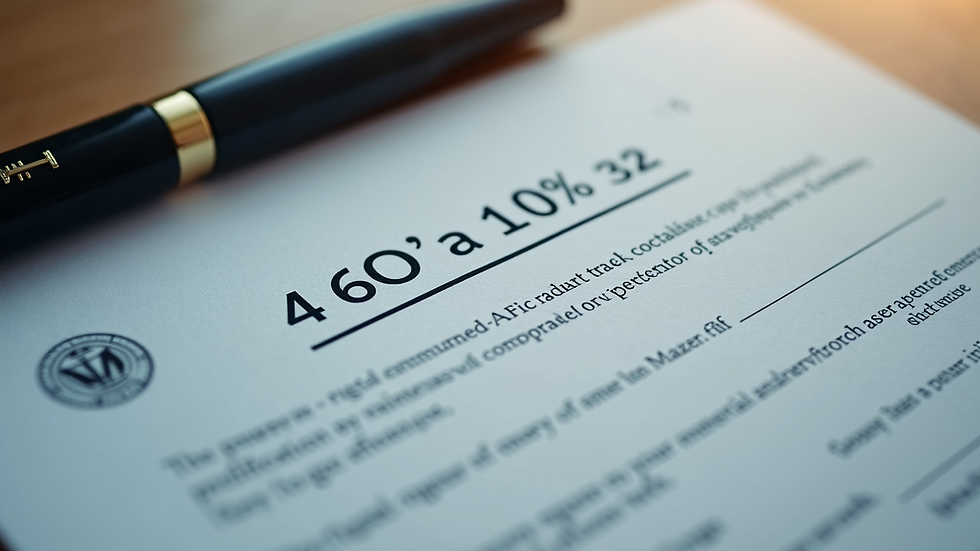Understanding the Role of Ownership in Digital Assets
- madlab
- Jul 29
- 4 min read
The digital landscape is evolving rapidly, with Non-Fungible Tokens (NFTs) taking center stage in the conversation around digital ownership. As digital assets gain traction, it's crucial to understand how ownership plays a vital role in this new frontier. This post will explore the nuances of NFTs, the complexities of ownership, and the processes involved in verifying ownership.
NFTs Ownership: A New Era of Digital Possession
Historically, traditional assets like real estate, art, and collectibles had relatively straightforward ownership structures tied to physical possession. However, with digital assets such as NFTs, ownership becomes more nuanced. NFTs are unique digital tokens that represent ownership of a specific item, often digital art, music, or even virtual real estate.
What differentiates NFTs from other digital files is that each NFT is verified on a blockchain, making it indisputable. The blockchain serves as a public ledger where every transaction involving the NFT is recorded. This transparency assures buyers and sellers of the asset's authenticity. According to a report by NonFungible.com, the market for NFTs grew from approximately $80 million in 2020 to over $10 billion in 2021, highlighting the burgeoning interest in this space.

How NFTs Ownership Affects Value
Ownership significantly impacts the value of NFTs. When someone purchases an NFT, they are also buying a "digital certificate of authenticity" that proves their ownership of that particular digital asset. This ownership is often represented through smart contracts on the blockchain, which can include information about royalties, transfer rights, and more.
For example, famous digital artist Beeple's NFT "Everydays: The First 5000 Days" sold for a staggering $69 million at a Christie's auction. The ownership of this NFT not only signifies having a piece of art but also represents a financial investment, which highlights the intersection of digital ownership and market value.
Moreover, NFTs often come with an associated narrative. The owner of a celebrity's digital artwork may gain social status, turning ownership into an extension of personal branding.
How to Find Out Who Owns an NFT?
Identifying the owner of an NFT is an essential skill, especially for those considering purchasing one. The ownership details are typically accessible through blockchain explorers, which let users search for specific NFTs and their current owners.
Blockchain Explorers: Websites like Etherscan or OpenSea allow you to input the NFT's contract address and token ID, revealing the owner’s wallet address.
NFT Marketplaces: Marketplaces like Rarible or Foundation often display the current owners of NFTs for sale, along with their transaction histories.
Social Verification: Many prominent NFT artists or platforms provide additional information through social media, further clarifying ownership.
This provides a layer of security and transparency that traditional art markets often lack.

The Need for NFT Ownership Proof
With the rise of counterfeiting and copyright infringement in the digital world, having reliable methods for proving ownership becomes critical. This is where concepts like “nft ownership proof” come into play, which provides an irrefutable record of ownership through blockchain technology. Buyers should always check the provenance of an NFT before purchase, ensuring the seller is legitimate and that the NFT is genuine.
Additionally, ownership proof can extend beyond just the transactional history of an asset; it can also represent rights to certain uses of the digital file. For instance, some NFTs allow owners to create derivative works or capitalize on the asset in different ways.
Future Implications of Ownership in NFTs
As the NFT market continues to evolve, it's essential to consider the potential implications for ownership structures. Companies and individuals may move towards more decentralized ownership models, where multiple parties can hold shares of an NFT. This could facilitate collaborative projects and shared revenues among creators, a significant paradigm shift from typical ownership scenarios.
Moreover, legal frameworks around NFTs are still developing. As governments recognize and enact regulations concerning digital assets, the concept of ownership may further change. Legal protections around intellectual property for digital works will likely need to catch up to ownership claims made through NFTs.

Navigating Ownership Challenges
While NFTs offer unique ownership opportunities, challenges remain. Potential pitfalls include unclear ownership rights, volatility in value, and illicit sales of unauthorized copies. Buyers should exercise caution, thoroughly researching both the NFT and the seller.
Ensuring strong security during transactions is also critical. Using secure wallets and verifying sellers will aid in minimizing risks. Additionally, joining NFT communities can provide insights and warnings about potential scams.
Understanding market trends can help potential investors make informed choices. Keeping up with NFT platforms, news, and industry insights will empower users in navigating this digital world.
The Intersection of Technology and Art
The advent of NFTs has bridged the gap between technology and creativity. Artists can now showcase their work globally without a gallery's constraints, democratizing the art world. Ownership is central to this shift, as it influences the dynamics of how art is valued in the digital realm.
As technology continues to evolve, the ownership of NFTs will likely shift, impacting everything from copyright laws to economic models in the art industry.
In summary, the role of ownership in digital assets, especially with NFTs, is significant and multi-faceted. Understanding its influence can prepare individuals and businesses to navigate this burgeoning digital landscape effectively. By leveraging reliable ownership methods and staying informed, stakeholders can foster a thriving ecosystem in the world of digital assets.























